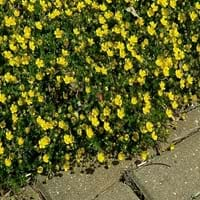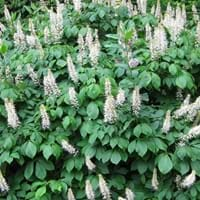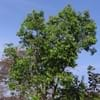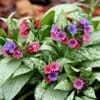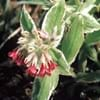Life Span
Biennial
Perennial
Origin
Not Available
Southeastern United States
Types
Abbotswood potentilla, Daydawn potentilla, Klondike potentilla
Not available
Habitat
Clay soil areas, Rocky areas, Wet ground
Bluffs, Coastal Regions, Stream side, Woods
USDA Hardiness Zone
3-8
5-9
Sunset Zone
A1, A2, A3, H1, H2, 1a, 1b, 2a, 2b, 3a, 3b, 4, 5, 6, 7, 8, 9, 10, 11, 12, 13, 14, 15, 16, 17, 18, 19, 20, 21, 22, 23, 24
Not Available
Habit
Not Available
Spreading
Flower Color
Orange, Yellow
White, Pink
Flower Color Modifier
Not Available
Bicolor
Fruit Color
Not Available
Brown
Leaf Color in Spring
Green, Light Green
Green
Leaf Color in Summer
Not Available
Dark Green
Leaf Color in Fall
Not Available
Lemon yellow, Yellow green
Leaf Color in Winter
Light Green
Not Available
Leaf Shape
Small elliptic
Palmate
Plant Season
Early Fall, Spring
Spring, Summer, Fall
Sunlight
Full Sun, Partial shade, Partial Sun
Full Sun, Partial Sun, Partial shade
Growth Rate
Not Available
Fast
Type of Soil
Well drained
Clay, Loam, Sand
The pH of Soil
Slightly Alkaline
Acidic, Neutral, Alkaline
Soil Drainage
Not Available
Average
Bloom Time
Late Summer, Summer
Summer, Late Summer
Repeat Bloomer
Not Available
No
Tolerances
Drought
Salt, Wind
Where to Plant?
Ground
Ground, Pot
How to Plant?
Stem Planting
Cuttings, Seedlings
Plant Maintenance
Low
Low
Watering Requirements
Average Water Needs, Needs watering once a week, Water less during winter, Water more in summer, Water when soil is dry
Keep the Soil well drained, Requires regular watering
In Summer
Lots of watering
Lots of watering
In Spring
Moderate
Moderate
In Winter
Average Water
Average Water
Soil pH
Not Available
Acidic, Neutral, Alkaline
Soil Type
Not Available
Clay, Loam, Sand
Soil Drainage Capacity
Not Available
Average
Sun Exposure
Full Sun, Partial Sun
Full Sun, Partial Sun, Partial shade
Pruning
Prune if you want to improve plant shape, Prune in early spring, Remove damaged leaves, Remove dead branches, Remove dead leaves
Remove damaged leaves, Remove dead branches, Remove dead flowers, Remove dead leaves
Fertilizers
Apply 10-10-10 amount
14-14-14 Fertilizer, Apply N-P-K, slow-release fertilizers
Pests and Diseases
Red blotch
Edema, Powdery mildew, Verticillium Wilt
Plant Tolerance
Drought
Salt, Wind
Flower Petal Number
Not Available
Single
Showy Fruit
Not Available
No
Edible Fruit
Not Available
No
Fragrant Flower
Not Available
Yes
Fragrant Fruit
Not Available
No
Fragrant Leaf
Not Available
No
Fragrant Bark/Stem
Not Available
No
Showy Foliage
Not Available
No
Showy Bark
Not Available
No
Foliage Texture
Not Available
Coarse
Foliage Sheen
Not Available
Matte
Invasive
Not Available
Sometimes
Self-Sowing
Not Available
No
Attracts
Bees, Butterflies
Butterflies, Hummingbirds
Allergy
Avoid during Pregnancy
Pollen
Aesthetic Uses
Showy Purposes, Used for decorating walls, fences, gates, hedges, etc.
Cottage Garden, Showy Purposes
Beauty Benefits
Good for skin, Skin cleanser, Skin Problems
Not Available
Edible Uses
Insignificant
Yes
Environmental Uses
Air purification, Prevent Soil Erosion, Provides ground cover, soil erosion prevension on hill slopes
Air purification, Wildlife
Medicinal Uses
Antibiotic, Astringent, Diarrhea, Haemostatic, Hypoglycaemic, Mildly painful menstruation, Odontalgic, Premenstrual syndrome, Swelling
Antirheumatic, Colic, constipation, Piles
Part of Plant Used
Flowers, Root
Seeds
Other Uses
Cosmetics, Showy Purposes, Used as a dye
Used for making soaps
Used As Indoor Plant
Insignificant
No
Used As Outdoor Plant
Yes
Yes
Garden Design
Not Available
Feature Plant, Foundation, Screening, Wind Break
Botanical Name
POTENTILLA
AESCULUS parviflora
Common Name
Potentilla
bottlebrush buckeye, dwarf horse chestnut
In Hindi
Potentilla plant
Bottlebrush Buckeye
In German
Potentilla Pflanze
Buckeye Putzer
In French
plante Potentilla
Bottlebrush Buckeye
In Spanish
planta Potentilla
bottlebrush Buckeye
In Greek
φυτό potentilla
bottlebrush Buckeye
In Portuguese
planta Potentilla
Bottlebrush Buckeye
In Polish
Potentilla roślin
Bottlebrush Buckeye
In Latin
Potentilla herba
bottlebrush Buckeye
Phylum
Vascular plant
Magnoliophyta
Class
Magnoliopsida
Magnoliopsida
Family
Rosaceae
Hippocastanaceae
Genus
Potentilla
Aesculus
Clade
Angiosperms, Eudicots, Rosids
Angiosperms, Eudicots, Rosids
Tribe
Not Available
Not Available
Subfamily
Rosoideae
Hippocastanoideae
Importance of Potentilla and Bottlebrush Buckeye
Want to have the most appropriate plant for your garden? You might want to know the importance of Potentilla and Bottlebrush Buckeye. Basically, these two plants vary in many aspects. Compare Potentilla and Bottlebrush Buckeye as they differ in many characteristics such as their life, care, benefits, facts, etc. Every gardener must at least have the slightest clue about the plants he wants to plant in his garden. Compare their benefits, which differ in many ways like facts and uses. The medicinal use of Potentilla is Antibiotic, Astringent, Diarrhea, Haemostatic, Hypoglycaemic, Mildly painful menstruation, Odontalgic, Premenstrual syndrome and Swelling whereas of Bottlebrush Buckeye is Antirheumatic, Colic, constipation and Piles. Potentilla has beauty benefits as follows: Good for skin, Skin cleanser and Skin Problems while Bottlebrush Buckeye has beauty benefits as follows: Good for skin, Skin cleanser and Skin Problems.
Compare Facts of Potentilla vs Bottlebrush Buckeye
How to choose the best garden plant for your garden depending upon its facts? Here garden plant comparison will help you to solve this query. Compare the facts of Potentilla vs Bottlebrush Buckeye and know which one to choose. As garden plants have benefits and other uses, allergy is also a major drawback of plants for some people. Allergic reactions of Potentilla are Avoid during Pregnancy whereas of Bottlebrush Buckeye have Pollen respectively. Having a fruit bearing plant in your garden can be a plus point of your garden. Potentilla has no showy fruits and Bottlebrush Buckeye has no showy fruits. Also Potentilla is flowering and Bottlebrush Buckeye is not flowering . You can compare Potentilla and Bottlebrush Buckeye facts and facts of other plants too.
